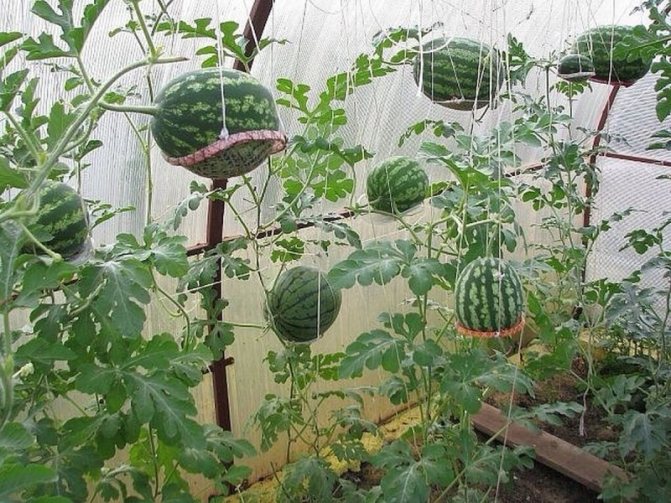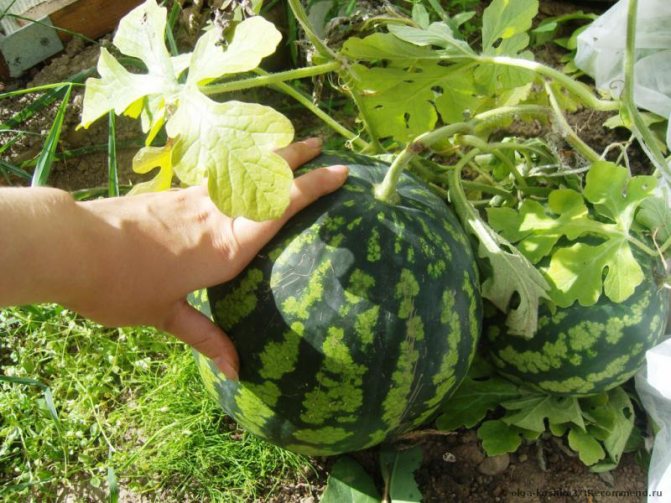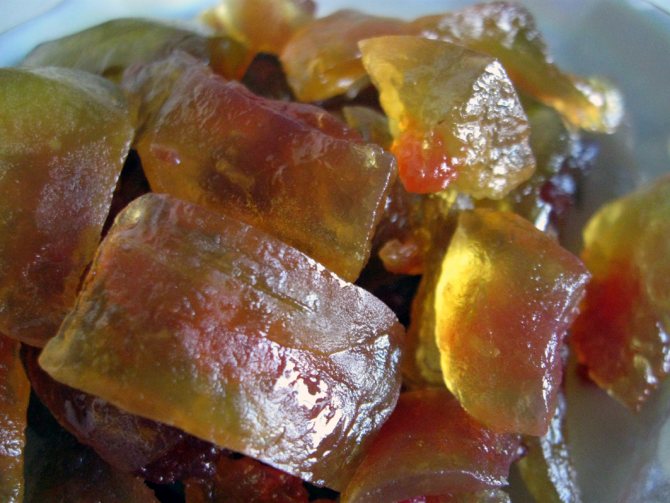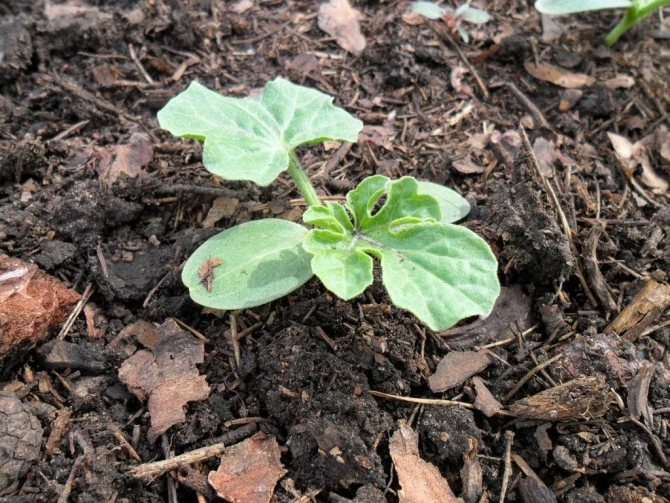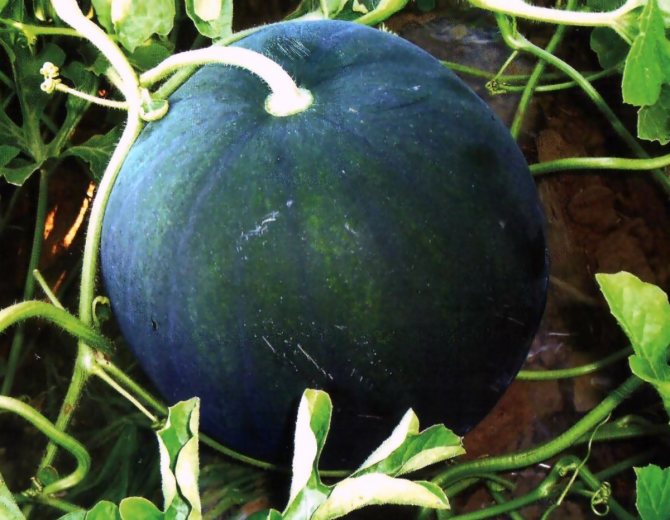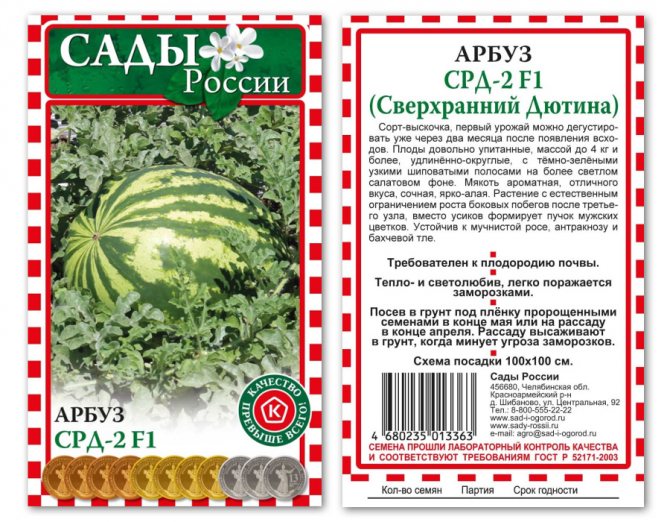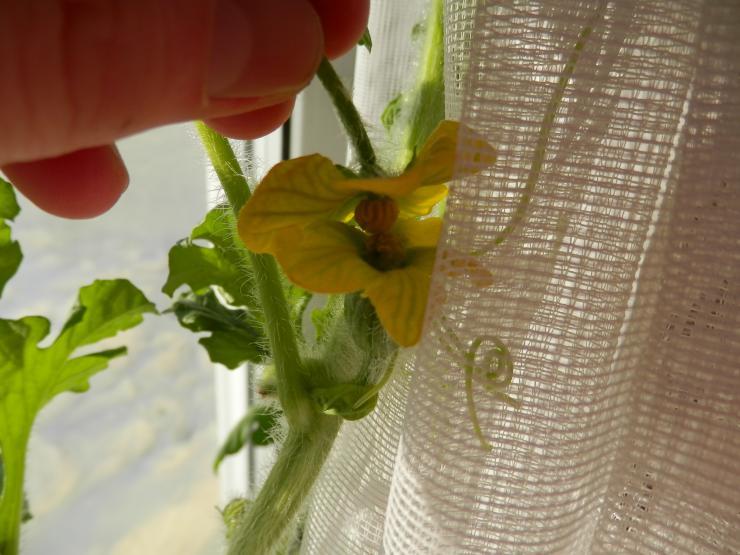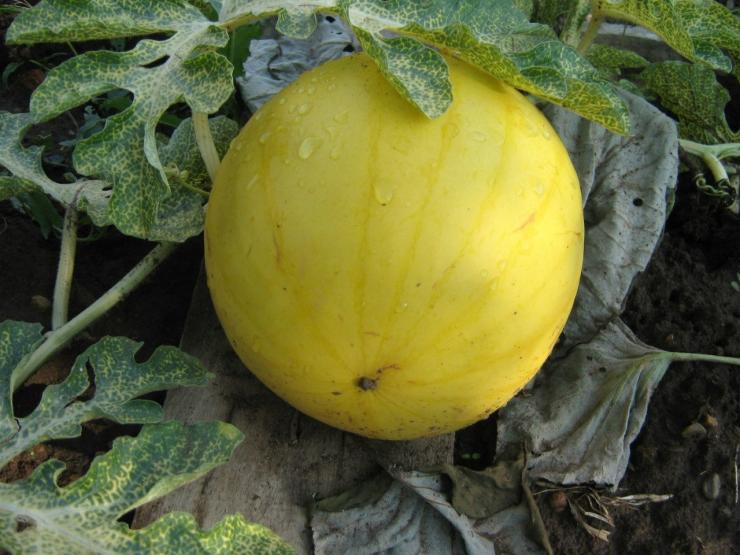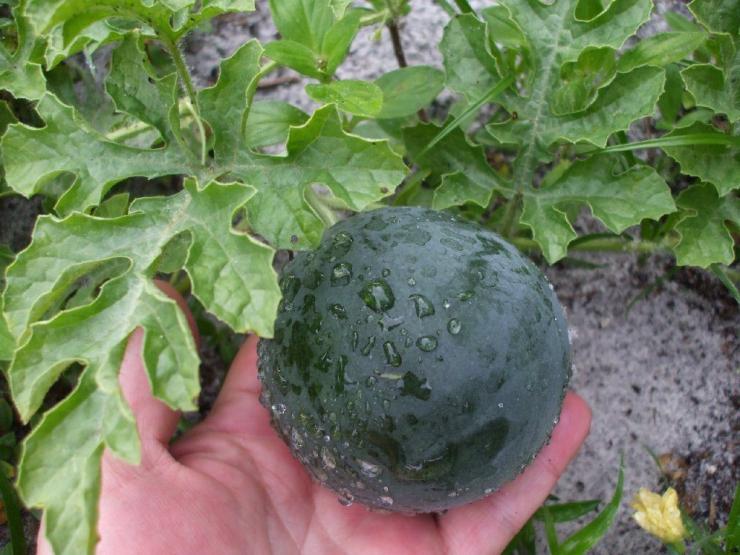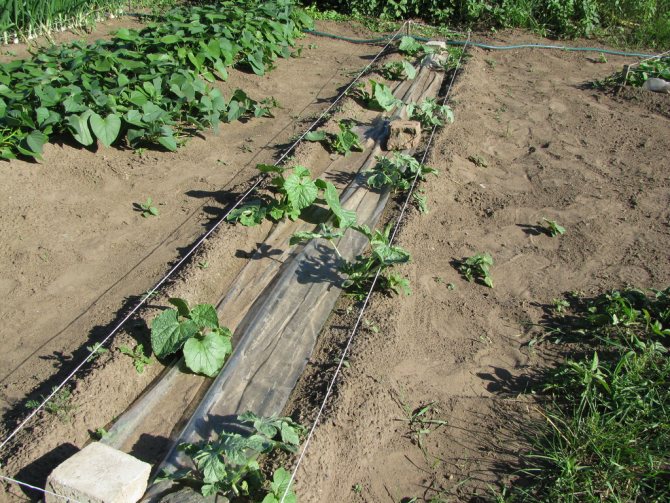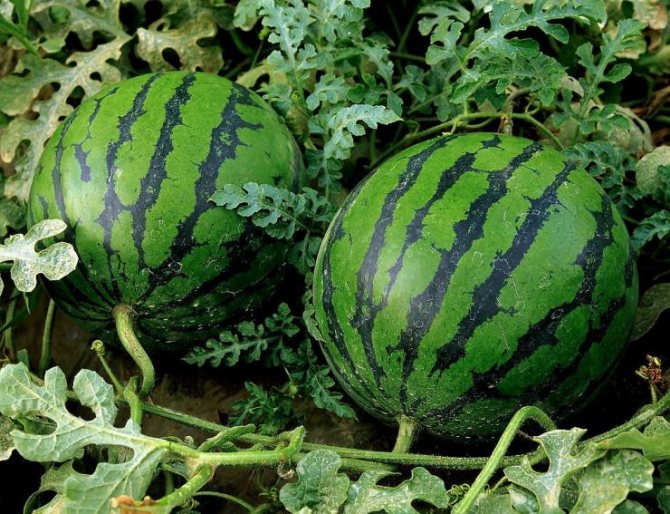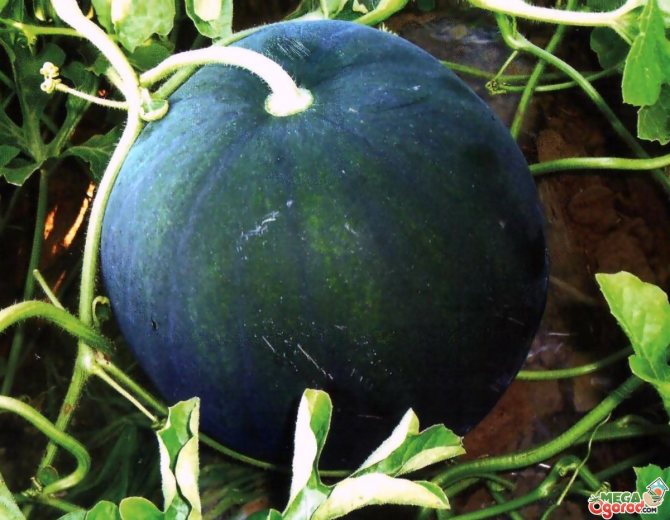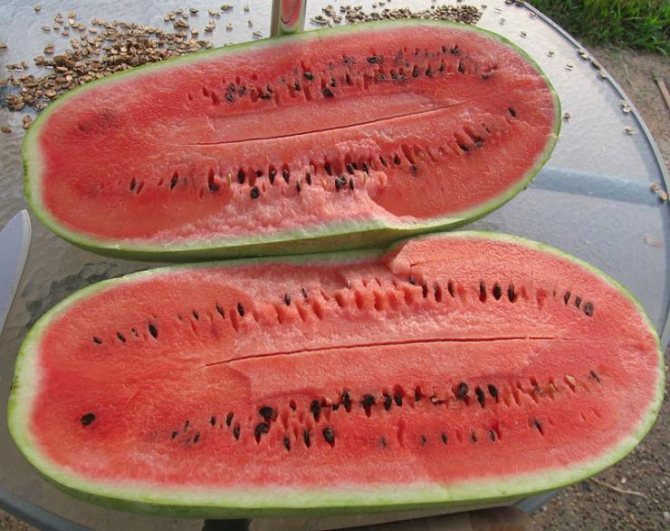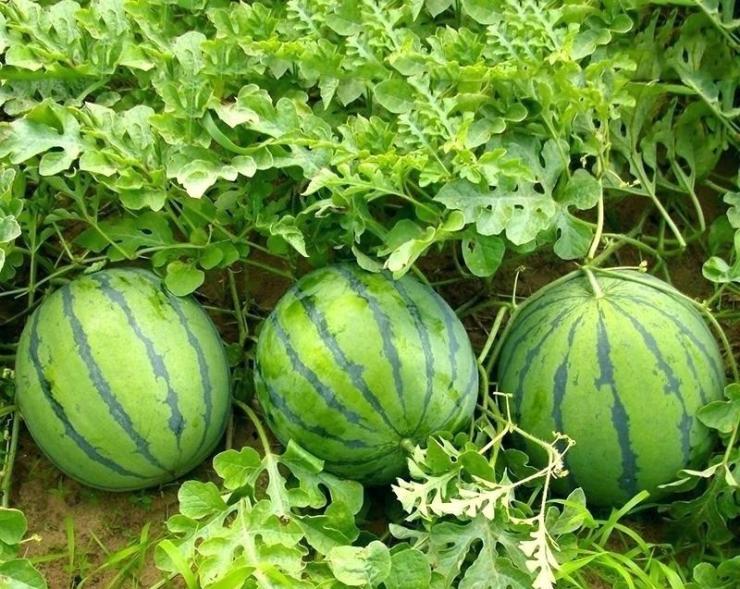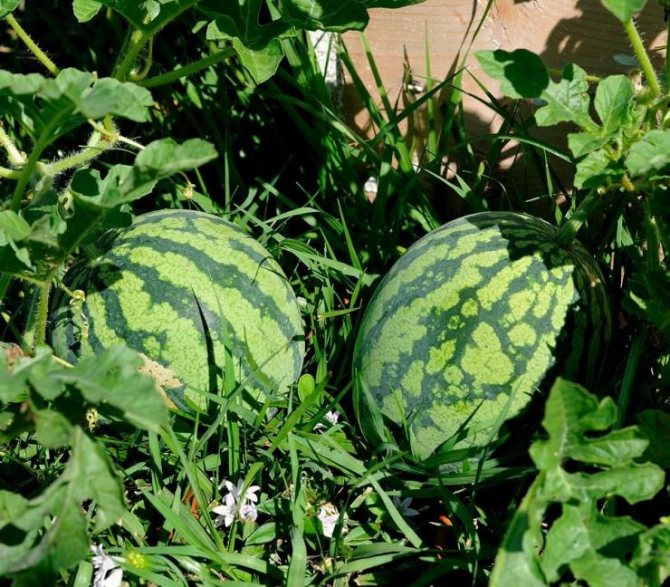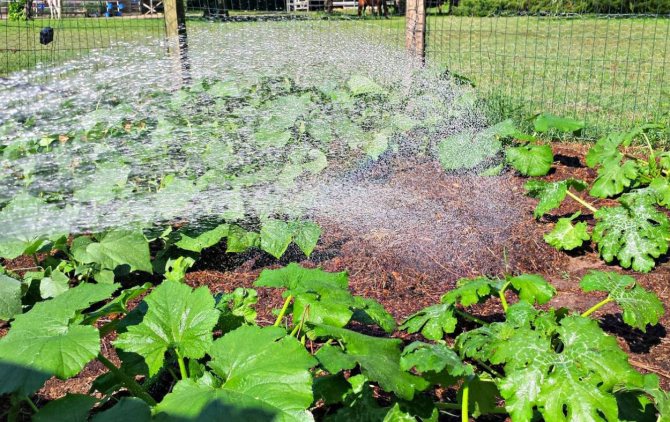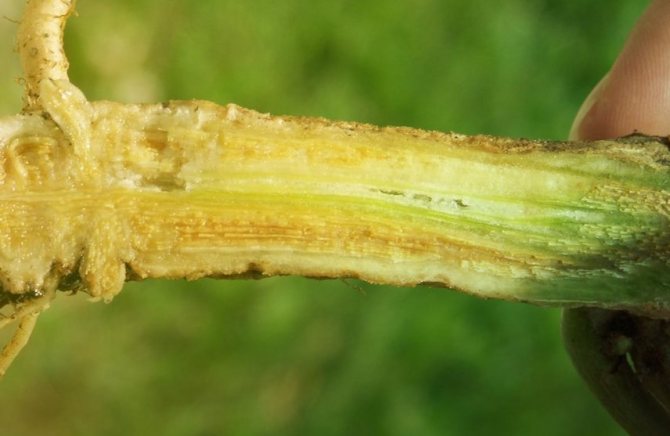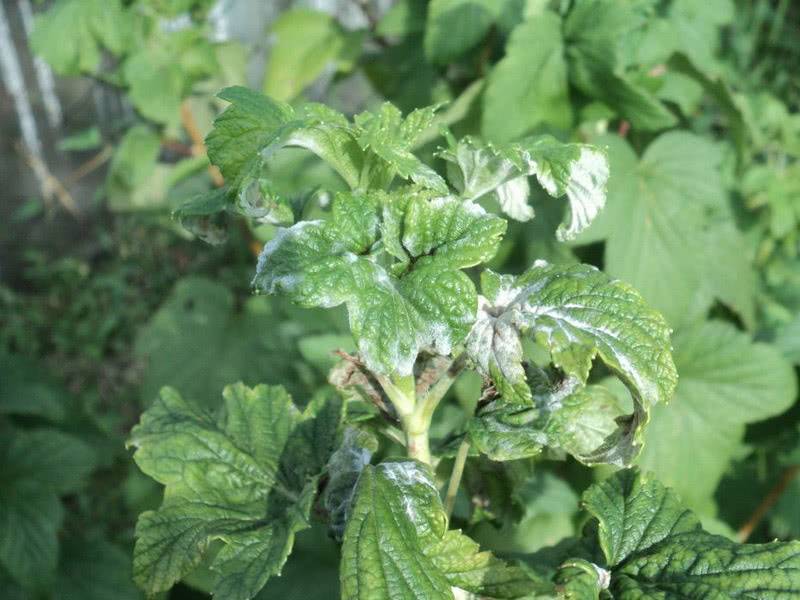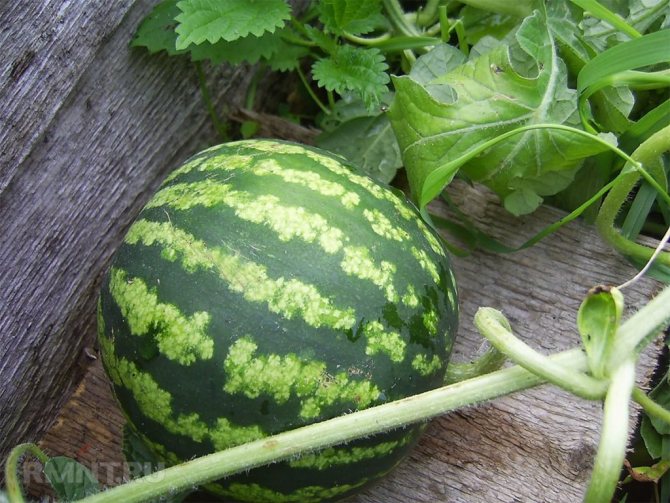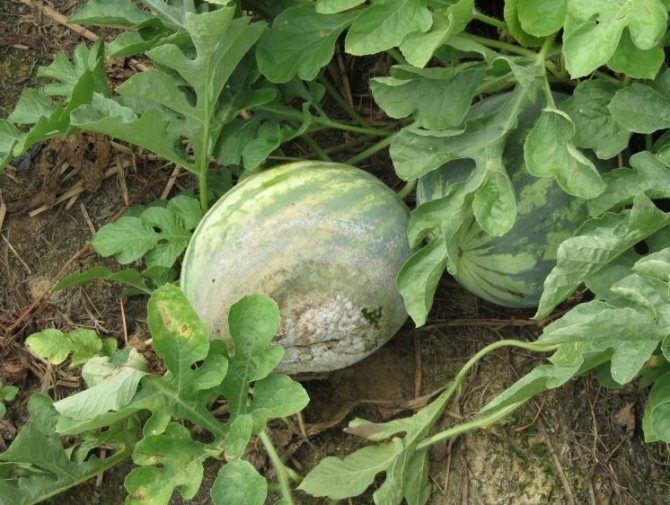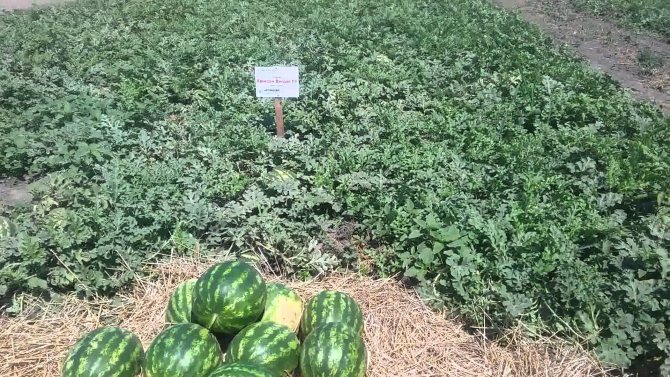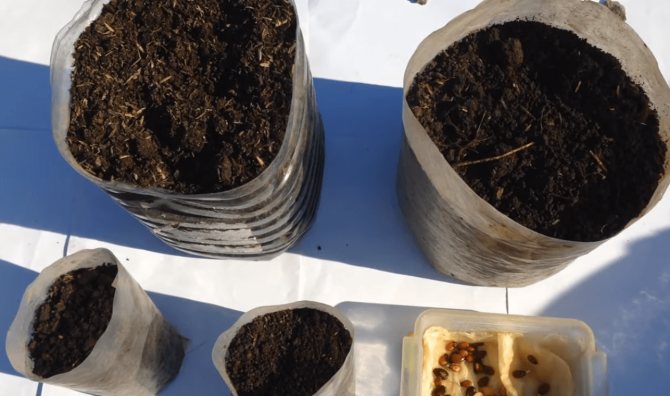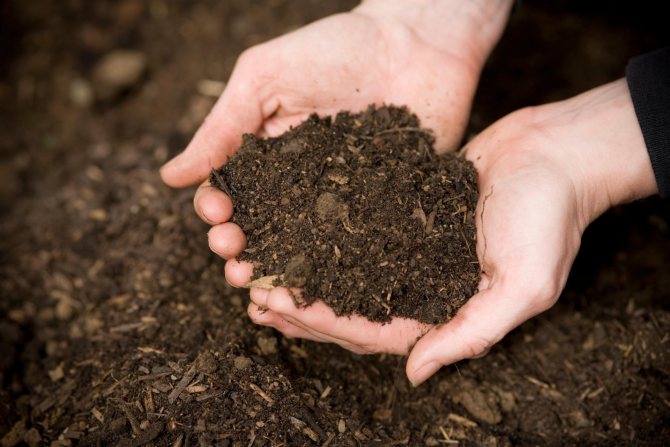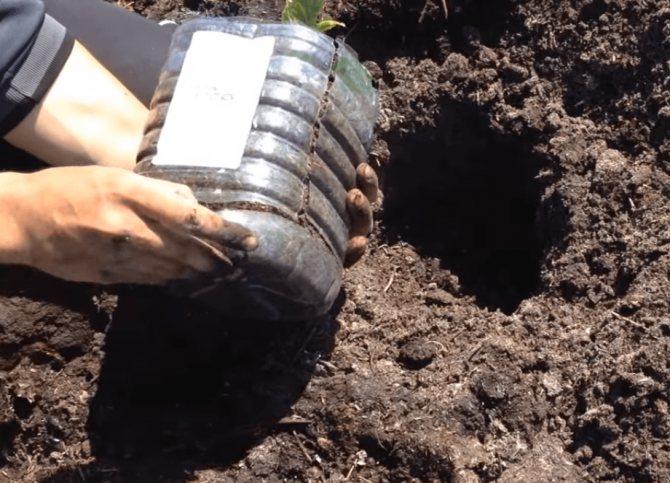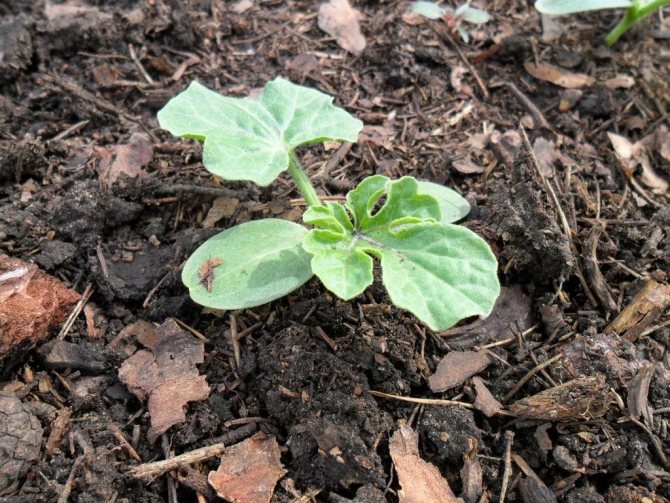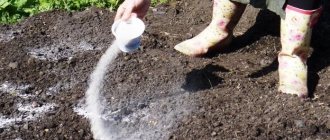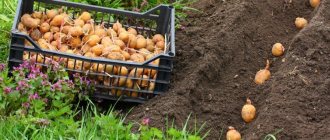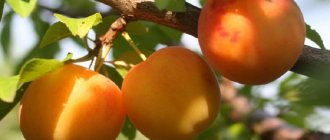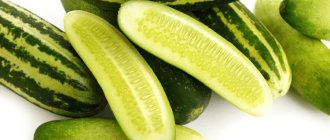Watermelon is a thermophilic melon crop, which in the Siberian climate can bear fruit and give a decent harvest if all growing conditions are observed. Breeders have bred zoned varieties and hybrid forms of melons, which are capable of producing crops not only in greenhouses, but also in the open soil of the Siberian region.
To understand how to grow watermelons in Siberia in the open field, you need to familiarize yourself with the rules of agricultural technology, caring for plants, and choose suitable varieties of watermelons and melons.
Features of the growth of watermelons in Siberia
The main feature of growing watermelons in Siberia is a short summer, which is not enough for the ripening of varieties lasting more than 90 days. Therefore, it is best to use seedlings and try to account for the possible frost period in spring and early fall.
Watermelon seeds are planted in greenhouse conditions in mid-spring, and ready-made seedlings are planted in open ground in early June. Ripe fruits are harvested before the end of the summer period, taking into account hot temperatures up to 35 degrees.
If there are constant debts, then melons and gourds grow poorly in such conditions. At the same time, locals prepare jam, candied fruits from unripe berries of watermelons, or simply sprinkle them with salt.
The purchase of watermelon seeds for Siberia must be approached responsibly
Numerous outlets specializing in the sale of garden seeds are sure to offer the attention of buyers the seeds of various varieties of watermelon. The owners of private houses, summer cottages located in the Siberian regions, successfully cope with the cultivation of melons in their beds, if they initially take a responsible approach to the issue of acquiring seed material for the next planting season.
Before buying seeds, you need to carefully study the varieties of watermelons for Siberia, the best hybrids, so as not to make a mistake in the choice. Below are the varieties of watermelons that have proven themselves well in the Siberian regions. Surely this review will be useful for local gardeners, will become a source of valuable and interesting information about melons.
Chill
Among Siberian summer residents, the watermelon Chill is popular, which is characterized by good tolerance to unfavorable climatic conditions. The variety is considered to be medium early, the time of harvesting falls on 85 - 97 days after the emergence of crop shoots. In powerful varietal plants, long lashes (up to 5 m), large, medium-cut leaves are formed. An unpretentious variety of watermelon Chill has an average resistance to fusarium, anthracnose, powdery mildew. The crop can be grown outdoors or in a greenhouse.
Watermelon fruits have an elongated spherical shape, weighing up to 4.2 kg. The fruit crust is dense, of medium thickness. In the context, the berry is deep red with a characteristic shade of pink. The juicy, sweet pulp has a granular structure. Large seeds of the culture, from 1.5 cm long, have a light brown speckled color, a rough surface. If it is possible to provide the best conditions for growing plants, up to 35 tons of melons can be harvested from 1 hectare. As evidenced by reviews about the watermelon Chill, varietal fruits lend themselves well to transportation, are stored for 3 - 5 months.
Ultra early
Delicious Ultra Early Watermelon got its name from the fact that the fruits are early ripening. The crop ripens 80 days after the beginning of the growing season. Varietal plants are compact in size; side shoots develop on them in a limited number. In the Siberian regions, the variety is grown mainly in greenhouses (under film shelters). Numerous reviews of the Ultra early watermelon indicate that light soils are most suitable for this variety, as well as for the Coral watermelon.
The fruits of the culture are round, dark green striped, weighing 4 - 6 kg. Berry pulp has a bright red color, granular structure, delicate, extremely sweet taste.
The optimal period for sowing seeds for seedlings is considered the end of April - the beginning of May, and the sprouts are planted in the ground after the threat of frost return has passed.
Photon
The high-yielding watermelon Photon belongs to the early maturing varieties that are in demand among gardeners from regions with a harsh continental climate. The main advantage of the variety is the ability of plants to format early harvest (82 - 105 days), the absence of problems with the transportation of fruits with excellent commercial characteristics. Summer residents who give reviews about the Photon watermelon note the culture's resistance to anthracnose.
The fruits of the culture have a green, smooth, thick rind, speckled with darker prickly stripes. The shape of ripe berries is elongated and round, their weight is 3 - 6 kg. From 1 square meter of planting area, you can get 7 - 7.5 kg of melons. Foton watermelon seeds are of medium size, black in color. Berry pulp has a red color, delicate taste. Experienced gardeners recommend a planting pattern of 70 x 150 cm.
Charleston Gray
In the middle zone of our country, the watermelon Charleston Gray, which is a powerful, vigorous plant, capable of forming a long main lash (up to 5 m), many lateral branches, feels excellent. The carved leaves of the culture are of medium size. This variety, which is the result of the work of French breeders, is considered to be old enough to withstand very unfavorable conditions.
Looking through the reviews about the Charleston Gray watermelon, you should pay attention to the solid mass of ripe fruits (12 - 18 kg). Varietal berries have a strongly elongated shape, light green, smooth skin, up to 2.5 cm thick. In the context of the fruits are red, their flesh is tasty, crispy. The seeds are characterized by large sizes, dark speckled color. The crop is perfectly transported, stored without loss of taste for 30 - 45 days.
SRD-2 Superearly Dyutina
The early ripe watermelon SRD-2 strives to grow many owners of personal plots in Siberia. Gardeners are impressed by the opportunity, by planting a watermelon SRD-2 Superearly Dyutina, to get ripe, tasty melons in the shortest possible time (58 - 60 days from the moment of planting the seedlings until the berries are fully ripe). The culture is a single-stem plant on which side shoots are formed in a limited number. The main stem is 1.5 - 2 m long. Watermelon leaves are medium in size, slightly dissected.
Analyzing reviews of the SRD-2 watermelon, we can conclude that the culture demonstrates resistance to anthracnose, other common melon infections. This variety, like its predecessor, the SRD watermelon, needs watering, manual powdering, and stalking. Ripe berries are round, slightly segmented, weighing 4 - 6 kg. The color of the fruit is light green with a pattern in the form of darker prickly stripes. The thickness of the flexible peel is 1.3 - 1.5 cm. The pulp has a red color, dense, granular structure. The shelf life of the fruit's commercial qualities is 25 days.
Siberian lights
Numerous approving reviews of the watermelon Siberian Lights are evidence of the high popularity of this early ripening variety (ripening times are within 78 - 95 days). The culture is characterized by high resistance to fusarium. The best predecessors of varietal plants are legumes, cabbage, potatoes. With proper care, the crop will delight you with a high yield (373 centners per hectare).
Delicious watermelon Siberian Lights has a wide-elliptical shape, smooth surface, dark green color with faint black-green stripes, weighs 1 - 2.4 kg. The color of the berry pulp is dark red, it tastes tender, juicy. The fruit peel is thin, white. Varietal watermelons do not lose their presentation even during long transportation. The culture has established itself as one of the most cold-resistant, drought-resistant among melons. It can be grown outdoors or in a foil greenhouse.
Siberian giant
Cold-resistant watermelon Siberian giant can be grown right in the garden or in a greenhouse. Choosing this variety, you should count on a high yield, stable fruiting. After reading reviews about the Siberian Giant watermelon, one can draw conclusions about the excellent transportability, good preservation of large berries.
The variety received such an original name quite deservedly. The fruits of the culture are large, their weight sometimes reaches 7 kg. The color of the surface of the berries is green, interspersed with darker prickly stripes. In the context of the fruits are red. Their pulp has a dense structure, juicy, delicate taste, excellent sweetness. Melon seeds are small in size, they have a brown-speckled color.
Best varieties for growing in cold regions
In order to grow a watermelon in Siberia, it is necessary to select certain varieties that have the following characteristics:
- the mass of ripe fruits should not exceed 4 kg;
- early ripening of the fetus;
- homeland (place of breeding of the corresponding variety).
Twinkle
The Ogonyok variety was bred back in the 50s of the 20th century, but at the same time it is still in demand among gardeners due to the presence of a considerable number of positive qualities:
- lash length 1.7 m;
- small leaves and berries are light green;
- average fruit weight up to 2 kg;
- the presence of sweet orange pulp and small seeds.
Inflorescences on watermelons in large quantities give smaller fruits, but they do not lose their sweetness. Ripe berries can be picked after 2.5 months after planting the seeds.
Sugar baby
The second name of the variety is "Suga baby", as it was successfully bred by French breeders. The external characteristics of the berry resemble a light with a greater weight up to 5 kg.
The pulp is pinkish-red with pronounced sweetness. The fruits ripen within 2.5 months after setting. The culture does not dissolve its whips and grows compactly over the territory.
Siberian giant
A hybrid of melons that can grow outdoors or in a greenhouse. The culture tolerates heat and drought well, and ripe fruits reach sizes up to 6 kg. Red, sweet, aromatic pulp with small seeds is an advantage of this variety.
Now reading: Why dream of a watermelon
A feature of the cultivation of this variety is considered to be the control of the formed ovaries, since an excessive amount can contribute to a decrease in yield.
Peking joy of the peasant
A variety of hybrid origin that ripens 100 days after the ovary has formed. Ripe berry is well transported and reaches a maximum weight of up to 8 kg. It is necessary to leave no more than 2 ovaries on the culture, since a larger number will be problematic to grow in cold weather conditions.
Gift to the north
The variety grows well in open areas, and the fruits ripen 80 days after the formation of the ovary. The maximum berry weight reaches up to 10 kg. At the same time, ripe watermelons are subject to long-term transportation.
During cultivation, it is important to protect the fruits from rain and cold, and also try to normalize the number of ovaries formed.
Care for melons in the Siberian climate
In the last days of June, plants begin to bloom. For the formation of the ovary, pollination by bees is not always enough; this can be done independently. The male flower is plucked, the female inflorescence is touched. You need to repeat several times until the berry is tied.
Note! It is necessary to get rid of weak shoots, leave one large central stem.
Formed ovaries are left 5-6 pieces, the rest are removed. About 8 leaves remain on one bush. The first berries appear 25-30 days after the formation of the ovary.
Important! In the Siberian region, frosts are possible in August, in order to preserve the harvest, the beds are covered with non-woven fabric.
The bushes are watered abundantly. In the heat, watering is necessary every three days. The rhizome grows strongly, the entire melon area should be watered. During the formation of berries, watering is stopped. In the rainy season, the fruits may rot, they must be covered with foil. Two weeks before the berries are fully ripe, watering stops.
Weeding must be done before the watermelons are tied. Then the weeds are not removed, the weed protects the berries from the sun's rays.
It is necessary to feed the bushes 15 days after planting with chicken droppings (25 g of droppings per bucket of water). Calcium chloride is added there - 20 g, superphosphate - 25 g. During the formation of ovaries, mineral fertilizers are needed. One bush accounts for 5 g of ammonium nitrate, potassium chloride, superphosphate. The whole mixture must be spread around the bushes, then water the ground.
Interesting! In seeds of 3-5 years of age, female flowers predominate, the yield is guaranteed.
Growing conditions
The conditions for growing watermelons in Siberia require a more detailed study, discussed below.
The right time to plant watermelon seeds
Planting seeds in open ground is best done in the last days of spring, since their germination lasts an average of 7 days, and during this period there is a significant warming in this region.
Seedlings are planted in a greenhouse or open soil in the period 10-15 June, and seeds for growing it from 23 April to 1 May. Step-by-step landing algorithm:
- preparation of planting material (seeds are wrapped in gauze soaked in warm water and left for several hours at a temperature of 25-30 degrees). Such conditions will contribute to the growth of sprouts.);
- the container for planting is filled with nutritious soil and a distance of 50 mm is left at the top;
- further, the prepared soil is watered and 2 seeds are added with a small depression;
- the soil is mulched using hay or straw;
- the container is placed in a warm place and care for the seedlings begins.
Seedlings should receive the maximum amount of light, so it is best to place them in sunny areas and water them regularly after drying the soil. The pots need to be hardened outside for 1 hour every day.
Ready seedlings for open ground should have 4 leaves, and are planted in an open space with a distance of at least 1 meter from each other. To obtain a harvest of Siberian gardeners, they use boxes of insulation or the beds are slightly raised above the soil with the help of dry tops, branches, logs or grass.
Preparation of soil for planting seedlings:
- natural leavening agents are evenly distributed over the soil;
- for 1 sq. meter add the mixture in proportion (1 tbsp. urea, superphosphate, potassium).
Now reading: How to properly grow a watermelon in the country
Fertilization is carried out 7 days before planting to provide loose soil.
Landing in open ground:
- dig a hole in the size of the seedling container;
- fill the pot with water and wait until it is absorbed as much as possible;
- the soil with the seedling rhizome is carefully taken out of the pot and transferred to a prepared hole on the ground;
- further, the seedling is sprinkled with soil and watered;
- at the end, the soil is mulched.
Tips for greenhouse cultivation of watermelons
The regions located on the territory of Siberia are characterized by: long, cold winters; fleeting hot, often even dry summers. In order to guarantee a successful result in the cultivation of melons, planting in greenhouses is considered preferable. This technology ensures the creation of the most favorable conditions for the growth of seedlings, preservation of the harvest.
In Siberian regions, greenhouses wrapped in two layers of translucent film are well suited for planting watermelons. Capital greenhouses made on the basis of the popular, effective polycarbonate material have proven themselves excellently.
Local summer residents initially try to plant seeds of the selected varieties at home in containers filled with soil. Seedlings are considered suitable for transplanting into a greenhouse after the first leaves have formed. The end of April is the best time for such a procedure. You can find out when to plant watermelons for seedlings here.
Before transplanting the shoots into the ground, you should start preparing the beds. For this purpose, the removal of the upper soil layer is carried out, followed by filling the trenches with humus, mineral fertilizers. Further, the nutrient layer is sent by the soil.
For planting seedlings, small holes are dug with a maximum depth of 10 - 11 cm, with an interval of 0.7 - 1 m. The gardener will need to provide for the presence of trellises near the holes, to which the growing lashes will be attached. It is highly desirable to engage in the thinning of shoots in a timely manner, removing weak, diseased specimens.
During the period of plant development, the following are mandatory: sufficient watering, loosening the soil, removing weeds, introducing organic fertilizing (liquid chicken droppings, mullein solution), airing the greenhouse. On one bush, 5 - 7 fruits should be left, which look the most healthy, strong. The rest of the ovaries must be trimmed.
Since pests and diseases are dangerous for watermelons, it is advisable to spray plants, planting material with effective means for prophylactic purposes: foundation, Bordeaux mixture. Processing the culture with an aqueous solution of ash or tobacco dust will help get rid of aphids.
The cultivation of watermelons in the regions of Siberia or in the Moscow region is a problem for many gardeners. A successful choice of suitable varieties of melons, the study of the recommended agrotechnical methods, followed by their application in practice, will ensure a large yield of sweet fruits. Self-grown watermelons will become a tasty, healthy treat for family members and guests, and will certainly cause the envy of neighbors.
How to care for watermelons outdoors
With mulched soil on watermelons, watering should be carried out no more than 2 times every 30 days (with the exception of very hot weather). Fertilizers are applied along with irrigation (cow dung or other organic compounds).
The main part of care is pinching (remove all stepchildren and leave no more than 2 ovaries) for the ripening of watermelons until the end of summer with an average weight of 2-3 kg.
Ovaries 50 mm long must be cut off the upper shoots. The area with watermelons must be free of weeds, as they absorb nutrients. In the middle of summer, additional feeding with potassium and phosphorus is recommended.
How to grow a watermelon in a greenhouse
The optimal temperature in the greenhouse is in the range of 25 degrees, therefore, film or polycarbonate is used to create such conditions.Landing takes place at the same time.
The purpose of growing watermelons in a greenhouse is protection from cold, rain and other characteristic weather conditions in the region. In this case, the pollination process is done manually, and the planting method (seedlings or seeds). The berry is most often grown on trellises.
The heat source for the watermelons is plastic water bottles that are placed around the perimeter of the greenhouse. At night, they give their warmth to the berries received from the sun during the day.
Sowing seeds
In a reliable greenhouse, manure bed or barrel, dry watermelon seeds can be sown in late April or early May. But many Siberian gardeners prefer the seedling method of growing melons and gourds. The age of the seedlings at the time of planting in a permanent place should be 3 - 4 weeks (less is better than more), so the seeds are sown around mid-April (even a little later for street ridges). They are dressed with a strong skin, and preliminary exposure in a damp cloth (three days) will accelerate germination.
Each seedling needs an individual 10 x 10 cm cup filled with loose soil. Drainage holes are required! Place the watermelon seeds at a depth of 3 cm. The optimum temperature for hatching is +25 degrees. When shoots appear, we lower it - to +18 during the day and +14 at night. Stretching, which occurs with excessive heat and shade, should not be allowed. Water in moderation.
Pests and diseases
Dangerous pests and diseases for watermelons:
- powdery mildew (the appearance of white spots on the foliage and the gradual death of the plant). Treatment with colloidal sulfur or special agents is required (Planriz, Topaz, Bayleton);
- anthracnose develops against a background of high humidity in the greenhouse (the appearance of yellow or pink leaves). Elimination of the disease when treated with Bordeaux liquid or other chemical preparations;
- spider mite. The plant gradually withers, curls, and the pests begin to feed on watermelon juice. Processing is carried out using folk remedies (tobacco, laundry soap).
Now reading: Growing watermelons in a greenhouse
Collection and storage of ripe watermelons
Small fruits ripen quickly with the appearance of characteristic signs:
- drying out of the adjoining tail;
- the formation of a clear watermelon pattern and a glossy shade;
- ripe fruits, when tapped, have a dull thud;
- the appearance of spots on the peel of a yellowish tint.
Longer storage of watermelon in Siberia can be carried out using wax, wrapping with cloth or storing berries in ash. The fruits are kept in well-ventilated cellars at a temperature of 3 degrees with a humidity of no more than 80%.
Harvesting
You can understand that it's time to harvest according to several criteria:
- The peel of the fruit does not squeeze when pressed.
- A yellow spot remains at the point of contact between the peel and soil.
- If you knock on a watermelon, a dull sound is heard.
- The stalk is withered.
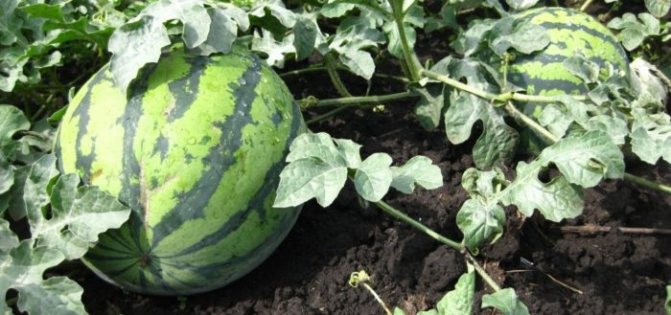
All these signs indicate that the berries need to be removed from the site.
Useful Tips
Useful tips for growing watermelons:
- open beds must be built using black film, since transparent does not give the expected result;
- the material is cut in the shape of a cross and seedlings are planted;
- before planting, the prepared material is treated with special growth stimulants;
- when transplanting, the root system is transferred along with a lump of soil;
- it is best to use peat pots for planting seeds;
- providing moderate watering for watermelons as needed.

